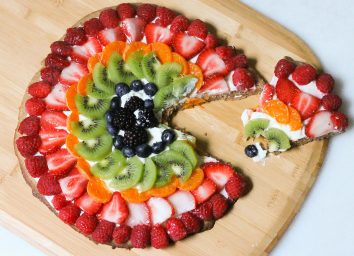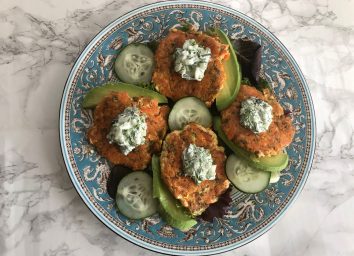The 7 Strategies That Help People Make Better Food Choices

While choosing healthy foods at the grocery store is habitual and effortless for some, it can be more challenging and even stressful for others, especially if they don’t have much experience deciphering a nutrition label. No matter what kind of shopper you are, there are certain strategies for healthy eating, or healthy eating nudges, that encourage and may even subliminally teach us how to make better food choices.
A team of researchers examined 96 studies and recently published research in INFORMS journal Marketing Science that explores the effectiveness of several healthy eating nudges. They accomplished this by testing them out in various interventions zeroed in on improving food choices.
Here are the seven strategies for healthy eating—aka nudges—that researchers analyzed, and the two that work best.
First, what exactly is a “nudge” in this scenario?
In the journal, the authors Romain Cadario and Pierre Chandon cite the definition of a nudge from the novel Nudge: Improving Decisions About Health, Wealth, and Happiness, by Richard H. Thaler and Cass R. Sunstein:
“Any aspect of the choice architecture that alters people’s behavior in a predictable way (1) without forbidding any options or (2) significantly changing their economic incentives. Putting fruit at eye level counts as a nudge; banning junk food does not.”
Cadario, who is also an assistant professor at IÉSEG School of Management in Paris, provides further clarification by explaining they examined “interventions in the way choice alternatives are presented without removing food options or changing prices.”
A nudge, in this case, is simply a gentle push from restaurants, school cafeterias, and grocery stores for consumers to make healthier decisions.
“Reorganizing a menu or a grocery shelf is a nudge. Taxing sodas or banning energy drinks is not,” says Cadario.
Now, what are the most effective strategies for healthy eating?
Each of these nudges can be broken into three categories: cognitively oriented (1-3), affectively oriented (4-5), and behaviorally oriented (6-7).
- Descriptive nutritional labeling. This type of labeling provides the calorie count and information about the nutrients in the food item or meal. The label can appear on packaged foods in the grocery store, in front of pre-made meals in cafeterias or self-service buffets, or even on menus and menu boards in restaurants.
- Evaluative nutritional labeling. This example of labeling is similar to descriptive nutritional labeling, but with an additional visual element. Evaluative nutritional labeling will either color-code nutritive increases or add special symbols or logos (think smiley faces or heart-healthy logos) that will aid consumers in deciding whether or not the option is healthy.
- Visibility enhancements. This strategy allows the consumer to better identify the availability of healthful food options by making them clearly visible. In a grocery store, this could be executed by putting healthy foods at eye level and the unhealthier ones higher up or down below. In a restaurant, this would be done by listing healthier food options on the very first page so that they’re prominently displayed.
- Hedonic enhancements. This is the type of enhancement that a writer could best orchestrate. Hedonic enhancements call for tasteful product descriptions that will increase its appeal. A description such as citrus-glazed carrots may generate greater appeal than the less descriptive sautéed carrots, for example. Product displays can also be enhanced in tasteful ways with the quintessential example being a colorful pyramid of fruit.
- Healthy eating calls. Healthy eating calls are both verbal and written. For example, food service staff could ask children going through the cafeteria line which vegetable they would like to have for lunch, which encourages them to choose one instead of avoiding it. Written healthy eating calls such as “Make a fresh choice” can be displayed on signs and stickers in cafeterias, as well.
- Convenience enhancements. Aptly named, convenience enhancements increase the ease of making healthy food choices by cutting down on the laborious aspect of eating healthy foods. Offering pre-cut fruit and vegetables eliminates that tedious step for the consumer, making it easier and more desirable to eat. After all, how easy is it to tear open a bag of chips? Another way of doing this by offering indulgent desserts at the end of the cafeteria line when trays are already filled with healthy foods that were front-loaded at the beginning of the line.
- Size enhancements. This type of intervention calls for the modification of the size of the plate or bowl by either increasing the amount of healthy food on the dish or by reducing the amount of unhealthy food on it.
While all of these strategies were deemed effective Cadario said the most successful were the behavior-oriented nudges, which are both convenience and size enhancements. The least effective of the bunch is calorie labeling.
“The most effective interventions directly change behaviors without changing what people think or feel,” he says.








